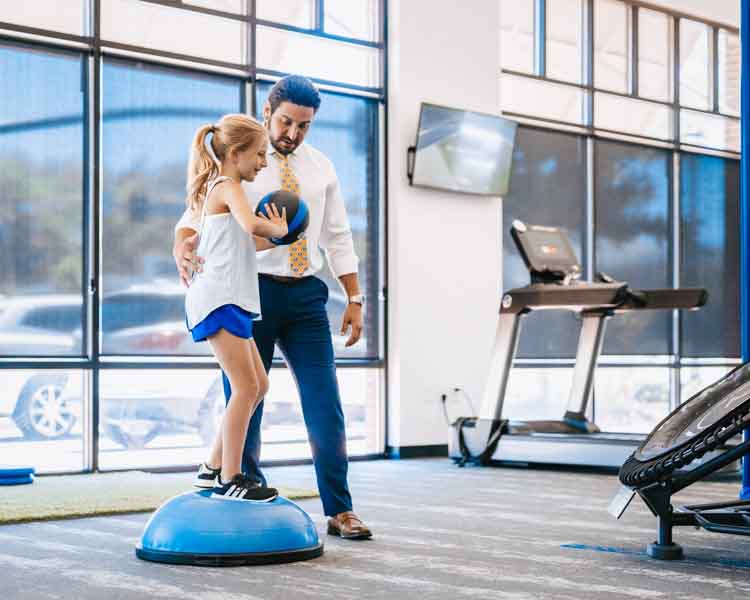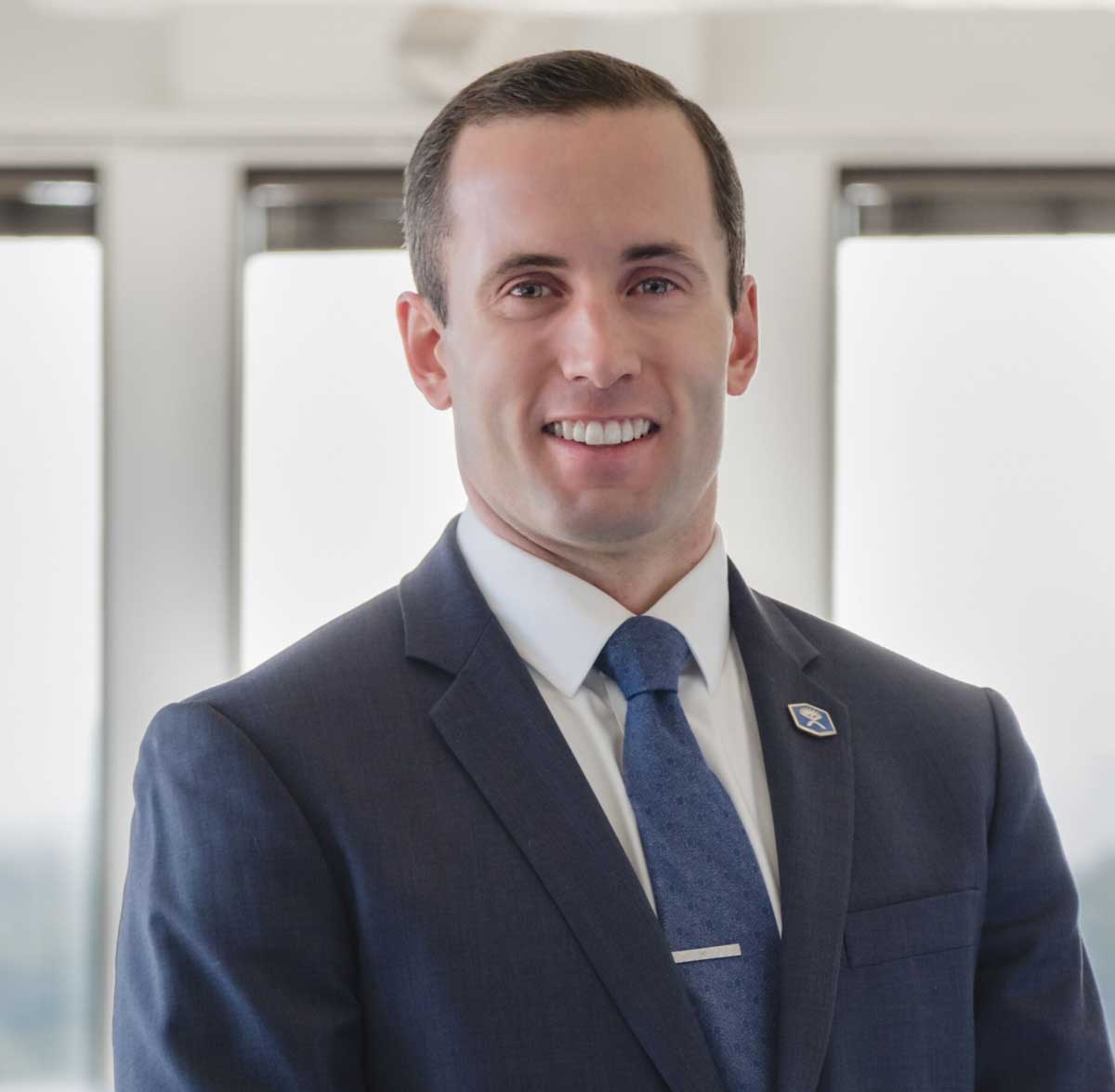Common Pediatric Physical Therapy Exercises

There are many myths regarding exercise floating around the internet and healthcare. One of the biggest ones is children should not lift weights.
Research is clear that resistance training is safe and effective for children and adolescents. Exercise should be supervised – preferably by a trained professional such as a strength coach or physical therapist. If the training is supervised and technique is emphasized, injury rates are low.
Exercise technique does not need to be overemphasized, however. Studies are clear that posture and mechanics are poor predictors of pain or injury. Appropriate training programs and recovery strategies should be a primary focus. For untrained people, especially kids, it is easy to overtrain.
Kids are resilient and heal quickly, but they are not invincible.
The Benefits of Pediatric Exercise
Exercise carries many benefits for kids, including cardiovascular health, bone mineral density, lipid profiles, blood sugar control, muscle mass, and personal self-esteem.
Exercise comes in many forms, including organized sports, school P.E. class, playing with friends, and structured exercise programs. Another common place for pediatric exercise is the physical therapy clinic.
Whether your child needs physical therapy for post-surgical rehabilitation, a concussion, or an ankle sprain, exercise will be involved. Many parents are left wondering what type of exercises would be best for their child to perform at home, both for injury recovery and prevention.
As I have noted in previous articles, the best exercise is the exercise someone enjoys doing. If you don’t enjoy it, you likely won’t stick with it. After enjoyment, intensity and volume are most important. The exercise should challenge the body. If it isn’t hard or completed often, results will be limited.
With that said, low-intensity exercise – such as walking – and low-volume exercise – once a week – can still provide benefits. As you exercise more and the body gets fitter, however, the challenge and frequency of exercise have to increase. This is true for adults and kids.
Some exercises can be universally applied and are good for growth and development. Here are some key pediatric physical therapy exercises your child is likely to encounter.
5 of the most common pediatric physical therapy exercises
1. Squatting
I implement squatting with all of my pediatric physical therapy patients. It is a great exercise for developing lower leg strength and improving coordination. It should be a staple in all physical therapy clinics and among the first choices for pediatric physical therapy exercises.
Squatting is a fundamental movement. It is how we sit down and stand up off of the floor. The squat is not only completed with a heavy barbell on the back. Squats can be effective without weight. They don’t have to be structured as “exercise” either. For younger patients, exercise can be turned into a game.
Game example:
- Competition to see who can hold an air squat (pretend you are sitting in an invisible chair) the longest
2. Deadlifting
Another fundamental movement, the deadlift cannot be avoided. It is the act of picking something up off of the ground. As with the squat, you don’t need to develop all children into powerlifters. That does not mean they won’t benefit from learning how to effectively lift heavy things off of the ground.
The deadlift is safe and effective for lifting heavy objects. Even if a child has a rounded back, they are getting benefit and not at an increased risk for injury.
The deadlift and the squat are among the best pediatric physical therapy exercises. I regularly use them with my patients.
Deadlift game example:
- Bending down to pick objects off of the floor. Challenge the child with bigger, heavier, and more awkward objects. Place the objects in a container on a table.
3. Running
When I say running, I do not mean setting up interval training or long runs. Running is, however, a movement most children do. Running takes place in most sporting events and is common among childhood games, such as tag.
When running is prescribed as a pediatric physical therapy exercise, it is generally a running progression following an injury. Like adult running, kids are often eager to start running. I find myself having to hold my pediatric patients back more than I have to encourage them to move.
Running is great for cardiovascular health, metabolic health, and building bone mineral density. I want those benefits, but I don’t want my patient to reinjure themselves if they aren’t ready to start running. Running can take many forms in the clinic and it is another staple pediatric physical therapy exercise.
Running game example:
- Races and relays
4. Jumping
While not as common as running – unless you are a front-line volleyball player – jumping is a regular sporting activity. My three-year-old son’s go-to dance move is to jump around. Bounce houses are a regular occurrence at parties. All this to say, jumping is a regular part of a kid’s life.
Jumping game example:
- Marking how high the child can draw on the wall. Tape a piece of paper, grab a marker, and measure how high they can mark by jumping.
5. Resistance training
Lifting weights will not stunt a child’s growth. The myth has spread far and wide and it lacks credibility. One review article pooled the results of 16 studies – including 1008 children age 7-12 years old – and found weight training had no impact on a child’s height. Studies do show reduced fat mass, improved cardiovascular and metabolic health, and greater bone mineral density.
This does not mean children need to start body-building routines. It does, however, mean resistance training can be used for safe and effective pediatric physical therapy exercise. Fundamental movements such as squatting, deadlifting, pressing, and rowing are greater pediatric physical therapy exercises that help a child develop strength, endurance, and power. They should be part of any physical therapy plan of care.
Resistance training game example:
- Tug of war
Helping your child return to their sport
Structured exercise is beneficial for children and adolescents, regardless if they are involved in athletics or not. It is more common, however, for children to engage in structured exercise if they are participating in an organized sport.
Participating in sports is an outstanding way for children to develop physically, cognitively, and socially. No sport is best for development. Children should be encouraged to sample many different sports to develop new motor patterns and enhance future learning. Of course, playing sports often eventually leads to injury.
Physical therapy is commonly used to help children and adolescents recover from an injury and return to the field. For most sports, the five exercises I listed earlier will be a staple in any rehabilitation program (if the sport is golf, running, and jumping will be omitted).
Pediatric physical therapy exercises will resemble adult exercises when sports are involved. The primary difference is the load and duration. Youth sports are shorter in duration than adult sports. Adults have a greater capacity for long-duration training than kids. That does not mean physical therapy will be easy for pediatric patients.
Physical therapy is personal and no two plans should look the same. Pediatric physical therapy exercises should target the specific concerns of the patient. Personalized treatment is always superior to a cookie-cutter approach.
If you take your child to see a physical therapist, rest assured the exercises are safe. The clinic is only the beginning though. A good physical therapist will provide you and your child the tools and resources to continue exercise to build resilience and physical capacity outside of the clinic.
If you would like to learn more about how your child may benefit from physical therapy, schedule an appointment or contact us today.
ABOUT THE AUTHOR

Zach Walston (PT, DPT, OCS) grew up in Northern Virginia and earned his Bachelor of Science in Human Nutrition, Foods, and Exercise at Virginia Polytechnic Institute and State University. He then received his Doctorate of Physical Therapy from Emory University before graduating from the PT Solutions’ Orthopaedic Residency Program in 2015.
Zach has numerous research publications in peer-reviewed rehabilitation and medical journals. He has developed and taught weekend continuing education courses in the areas of plan of care development, exercise prescription, pain science, and nutrition. He has presented full education sessions at APTA NEXT conference and ACRM, PTAG, and FOTO annual conferences multiple platforms sessions and posters at CSM.
Zach is an active member of the Orthopedic and Research sections of the American Physical Therapy Association and the Physical Therapy Association of Georgia. He currently serves on the APTA Science and Practice Affairs Committee and the PTAG Barney Poole Leadership Academy.